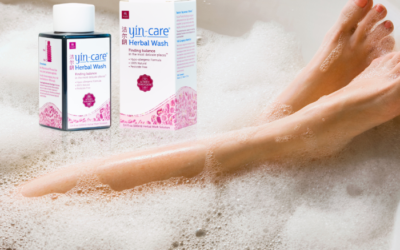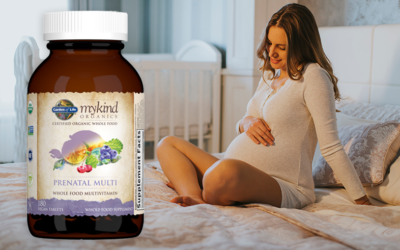Chinese Herbs for Headaches
The Mayo Clinic (*) classifies headaches as primary and secondary. Primary headache pain is caused by the overactivity of the pain-sensitive structures in the head. The chemical activity in the brain, the nerves or blood vessels surrounding the skull, and the muscles of the head play roles in sensing pain. Primary headaches include migraine, tension, cough and exercise headaches. A secondary headache is a symptom of a disease that activates the pain nerves in the head. The causes vary widely. Secondary headaches include sinusitis, tumor, blood clot, glaucoma, and ice cream.
Traditional Chinese Medicine (TCM) uses the nature of pain, location, and aggravation to diagnose the type of headache. Differentiation is particularly important for TCM herbal treatment. The wrong treatment can make symptoms worse, temporarily. Factors that contribute to headaches are a constitution, excessive mental work, and overwork. The emotions of anger, worry, fear, and shock can set the stage for a headache. Excessive sexual activity, particularly in men can be a factor by depleting the Qi. A poor or immoderate diet is another factor. Exposure to the wind with cold or heat can cause a headache through the muscle tightness. Weather can stir up the Liver and cause a headache. (1)
Come into the herb pharmacy and let’s take a look at a few classic headache formulas. Most of these formulas have many applications. In the spirit of saving heads from overwork, the concentration will be on headaches.
Tian Ma Gou Teng Yin
Gastrodia and Uncaria Drink
Tian Ma Gou Teng Yin is a recent formula, first recorded in 1958. At this time there was a trend to merge western Western biomedical knowledge with TCM. The purpose behind this formula was to treat “hypertensive headaches, dizziness, and insomnia.” Some of the herbs used were shown to reduce high blood pressure in research, as opposed to traditional usage. However, this widely used formula is most effective when the presentation matches traditional herb indications. This formula is for Liver Yang rising headaches. Yang is the active hot element of the Yin Yang pair. When it is not rooted by Yin, the chill element, rushes upward causing headaches. The focus is to control Yang’s upward rush. For this formula, the pain location is on the sides of the head, at the temples and along the eyebrow. The pain is intense, throbbing or distending in nature. It may be accompanied by flashing lights or visual disturbances that are part of migraine headaches. Sufferers are better when propped up on several pillows. Other symptoms include dizziness, nausea, a feeling of heat in the head, insomnia and dream disturbed sleep. Tian Ma Gou Teng Yin has herbs which not only address the issue of Yang rushing up but also the underlying Yin weakness. (1)(4). It is often used for headaches from hypertension. A study found Tian Ma Gou Teng Yin lowers high blood pressure through vascular tone or sympathetic vasomotor activity(2).
Lycia Chrysanthemum Teapills (Plum Flower)
Qi Ju Di Huang Wan
Lycia Chrysanthemum formula is like Tian Ma Gou Teng Yin in that it addresses Liver Yang unfettered by Yin moving upward in the head. The mechanism of the formula differs. The focus is to nourish Yin to keep Yang down. Based on Lui Wei Di Huang Wan, this formula first and foremost nourishes Kidney Yin. The addition of two herbs, Gou Qi Zi and Ju Hua, turns it into a super formula for headaches from Kidney deficiency. These manifest because the Kidney essence fails to rise and nourish the brain. The pain is experienced inside the head and possibly at the occiput. A headache will appear after sexual activity. Accompanying symptoms are dizziness, pain behind eyes, pressure behind eyes, dry eyes, restlessness, insomnia (3). Other Kidney Yin deficiency signs include feeling warmer in the evening, scanty urination, slight constipation, tinnitus, sore lower back (1). Studies show that this formula has potential in the treatment of hypertension. (4)
Serving size: 8 counts three times a day.
Xiao Yao Wan
Rambling Powder
Modern TCM practice seems to see Liver Qi Stagnation in near epidemic proportions. Xiao Yao Wan is at the ready in clinics across the country. Headaches from Liver Qi stagnation are typically triggered by anxiety and stress. The pain will be at the forehead or temples. It may move from one side to another. Although the pain can be intense it is not throbbing. Other symptoms are digestive upsets such as nausea, belching, bloating, small stools, and sighing. PMS headaches are often of this variety and alleviated by Xiao Yao Wan. Read more about this formula in this article.
Serving size: consume according to label directions or instructions from your knowledgeable healthcare practitioner.
Long Dan Xie Gan Tang
Gentian Decoction to Drain the Liver
The Liver is often the usual suspect when it comes to a headache. This time the formula is for Liver Fire. The pain is like a Liver Yang rising headache, throbbing, distended, pulsating, but more intense. It tends to be in one place and is often paired with nausea or vomiting. Other symptoms include insomnia, dizziness, tinnitus, dry throat, red eyes, and constipation with dry stools. With the appropriate presentation, Long Dan Xie Gan Tang is a good formula for migraines. It should not be taken in the long term as it can hurt weak digestion.
Serving size: consume according to label directions or instructions from your knowledgeable healthcare practitioner.
Head Q (Health Concerns)
This is a formula for a Wind-Cold type of headache either chronic or acute. It is useful for both prevention and treatment. A Wind-Cold headache manifests at the occiput, back of the head, and is accompanied by neck stiffness. The pain will feel better with the application of heat. Other symptoms include aversion to cold, stiff achy shoulders, an absence of thirst, sinus congestion, and itchy eyes. Wind-Cold headaches can develop as part of flu symptoms, or from being exposed to wind and cold. The latter can turn into a chronic condition if an individual has a weaker constitution. Please wear a scarf when you go out in the cold, thank you.
Head-Q gives some patients an immediate effect, whereas others must take Head-Q on a regular basis. If symptoms are better with warmth, this formula can also be used for TMJ, migraines, trigeminal neuralgia and other facial pains.
Serving size: 3 to 5 Count three times per day for an acute headache
3 count, three times per day for a chronic headache.
Two More Formulas
For a forehead headache that is worse after eating, stroll to your herbal medicine cabinet and grab the Bao He Wan. The pain can be quite intense. Other symptoms are feeling full, sour regurgitation, belching and bad breath. If there is exhaustion with a forehead or whole head headache tries some Bu Zhong Yi Qi Tang. This headache pain will be dull. It is better with rest, worse with excessive work and worse in the morning. Read more about Bu Zhong Yi Qi Tang here.
A Parting Shot
There are factors that contribute to headaches. This is good, it means we have some control of the sometimes debilitating pain of a headache. In addition to the TCM factors previously mentioned consider these. Skipped meals, lack of sleep, stress, processed meat, and red wine.
Feel better soon and don’t forget that scarf in the wind and cold. This includes air conditioner wind.
Disclaimer
Use herbs wisely. If you have questions or special considerations, work with your practitioner. If symptoms worsen or you have concerns, contact a knowledgeable practitioner. These statements have not been evaluated by the Food and Drug Administration. These products are not intended to diagnose, treat, cure or prevent any disease.
Reference
1 The Practice of Chinese Medicine: The Treatment of Diseases with Acupuncture and Chinese Herbs. Giovanni Manioca, Churchill Livingstone, 1994
2 American Journal of Chinese Medicine 1989;17(3-4):211-9. The herbal medicine tian ma gou teng yen alters the development of high blood pressure in the spontaneously hypertensive rat. Zhang TX, Wang YF, Ciriello J.
3 Chinese Herbal Patent Formulas, A Practical guide, Jake Fratkin, Shya Publications, 1986
4 Evidence-Based Complementary and Alternative Medicine
Volume 2013, Article ID 262685, 10 pages, Chinese Herbal Medicine Qi Ju Di Huang Wan for the Treatment of Essential Hypertension: A Systematic Review of Randomized Controlled Trials
Jie Wang, Xingjiang Xiong, Guoyan Yang, Yuqing Zhang,3 Yongmei Liu, Yun Zhang,1 Zhenpeng Zhang, Jun Li, and Xiaochen Yang1
Formulas and Strategies, Portable 2nd edition, Bensky, Scheid, Ellis, Barolet published Eastland Press Inc.

A licensed acupuncturist since 1999, Diana lives and works in Santa Cruz, California. Her practice focuses on pain management, stress reduction, and creating health. A longtime friend of plants, she loves the herbal side of Traditional Chinese Medicine. Diana shares her herbal interests through writing and a card game she designed and illustrated: Herb Apocalypse*. Volunteer work includes The Rabbit Haven, a rabbit rescue, and Livity Rising, free community healing clinics. Author of Herb Apothecary: The Coloring Book: 54 Chinese Herbs available on Amazon.



